Music is the universal language
“Glory to God in the highest heaven, and on earth peace to those on whom his favor rests.” - Luke 2:14
Norse Guitar Feeds
Sowing in the Storm with "Ecstatic Black Metal" Band Agriculture
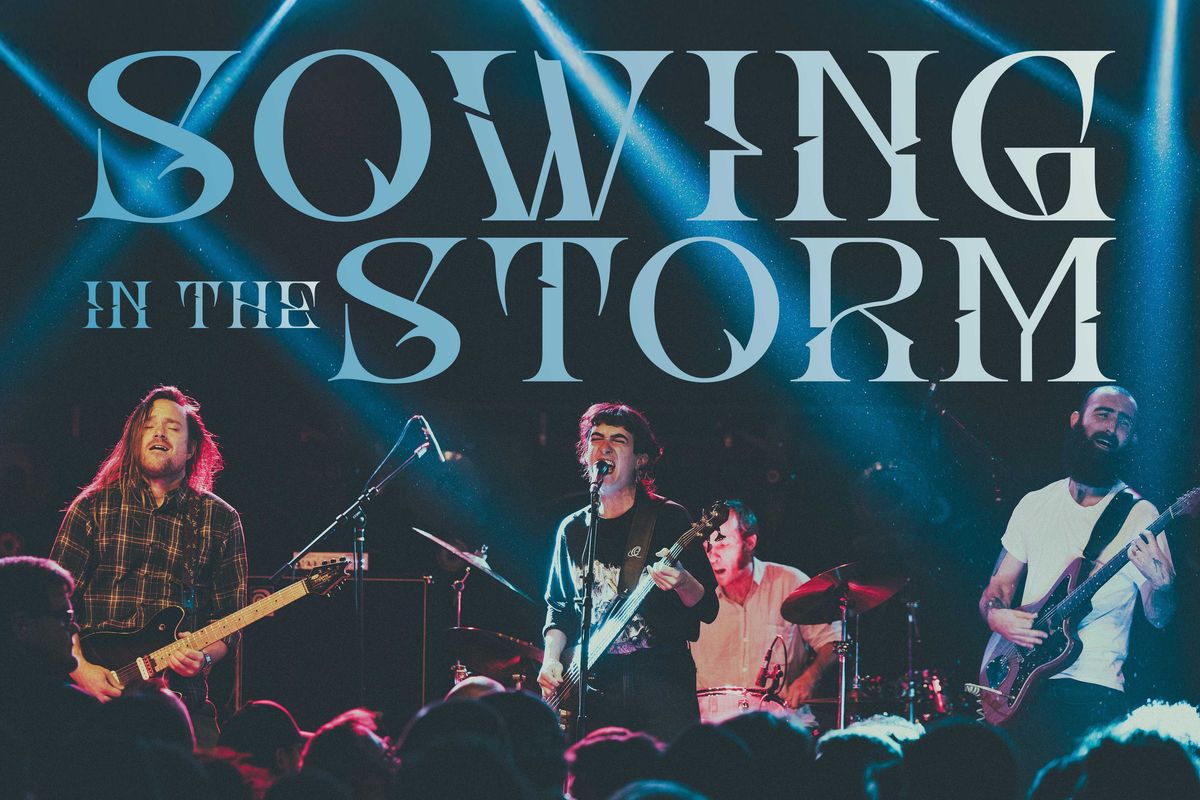
Los Angeles experimental metal band Agriculture’s new record, The Spiritual Sound, might not make sense to you at first listen. When the band sent the album to their friends, many of them were overwhelmed, if not weirded out. The band members weren’t surprised. “If I heard this record for the first time, I’d be pretty confused by it,” says guitarist and vocalist Dan Meyer.
The record opens with clanking bass strokes before a dizzying hornet’s nest of guitars and drums careens around maniacally for 20 seconds. After that, a brutal downtuned riff kicks in, accompanied by face-melting shredding. By the time the song hits the one-minute mark, and vocalist/bassist Leah B. Levinson’s dungeon-creature scream rips across the track, there have been three distinct movements. There are four more minutes, and a few more movements, to go—including a beautiful melodic reprieve that’s reprised near the song’s final moments.
It’s a thrilling shot across the bow from one of heavy music’s most fearless acts. By the end of The Spiritual Sound, Agriculture have extended their tongue-in-cheek genre designation of “ecstatic black metal” into regions like powerviolence, noise, alternative, shoegaze, and sounds that touch on folk and traditional. “Dan’s Love Song,” for example, with its nostalgic melody and simple chord progressions, could be a noise-rock interpretation of some obscure 1800s ballad. (The band lists Metallica, Slipknot, the Jesus and Mary Chain, and Bob Dylan as primary influences on the new album.) “Bodhidharma,” meanwhile, flips on its heel between headbanging metal and passages of silence, punctuated by screams, whispers, and Haug’s frozen, hulking snare and kick bursts. It also features some of Chowenhill’s most mindboggling lead guitar passages.
“The problem that I was trying to solve with my songwriting on this record was, ‘How do I write about things as they occur in my life without overly dramatizing them?’” —Leah B. Levinson
Formed in the early days of the pandemic, Agriculture—Levinson, Meyer, guitarist Richard Chowenhill, and drummer Kern Haug—have defined their sound as something that is once experimental, abrasive, and jubilant. The record title and the band’s self-determined genre designation hail from a jokey remark lobbed at them: “I love the spiritual sound of this ecstatic black metal.” The phrase, and the band, are the subject of debate on various heavy-music forums. There is a certain sense of Ursula K. Le Guin’s world-building at play in Agriculture’s music—a playfulness, curiosity, and seeming inhabitance of an alternate reality.
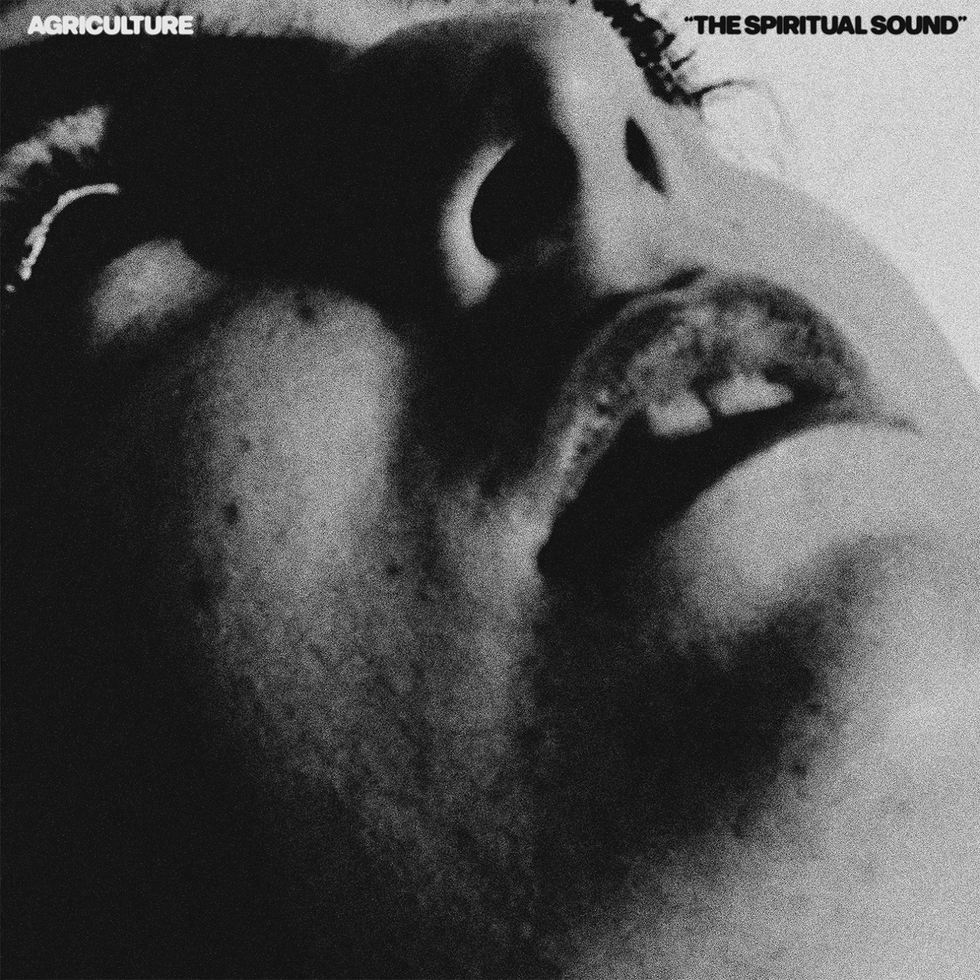
The band’s writing process for The Spiritual Sound was “unusually collaborative,” says Meyer. Songs were brought in fully formed, then torn apart and reconstituted, often with different parts. Meyer likens it to building a character at the outset of a role-playing game. “The head of this song ends up going with the body of that song,” he quips.
Once songs were solidified, they were taken to what the band calls “Richard’s kingdom”—the affectionate term for Chowenhill’s studio, where deep production began after principle tracking. That’s where vocals, overdubs, and “ear candy” were added. It’s also where plenty of sparring took place. “It is a more adventurous record,” says Levinson. “We make a lot of capital-C choices on it, and it really did require us setting aside creative differences, or at least sitting with things and being like, ‘I don’t know where this is going, I don’t like this, but I’m gonna sit with it and trust that each other has a vision.”
Chowenhill, who is trained as a composer in the classical tradition, is responsible for most of the jaw-dropping guitar theatrics on the record, influenced by shredders like Alexi Laiho and Eddie Van Halen alongside Hungarian composer György Ligeti—in particular Ligeti’s “String Quartet No. 2.” “There’s no guitars, but you can transpose those things to guitar,” he explains, naming the composition’s chromatic motion and left-hand techniques as things he considered while composing leads. His tremolo picking, in particular, is astonishing. That comes from worship of heroes like Van Halen, but also mandolin players like David Grisman and Chris Thile.
“We’re in this weird era right now where it’s actually more rare to not be hearing musical sound than it is to be hearing it.”—Dan Meyer
While Meyer drew Zen Buddhism concepts into the record on songs he composed, Levinson took inspiration from literature produced during and after the AIDS epidemic in the U.S., especially David Wojnarowicz’s Close to the Knives: A Memoir of Disintegration, a collection of essays reflecting on the crisis. Poet Ted Berrigan’s classic The Sonnets was also in view. They spurred Levinson’s lyricism toward “looking at suffering and spirituality in a quotidian sense”—an interesting exercise on a record of volatile music.
Leah B. Levinson’s Gear
Basses
Ibanez SR505E 5-string
Ernie Ball Music Man Sabre
Amps
Ampeg SVT-4 Pro head
Peavey 2x15 cab
Effects
Ibanez Pentatone Gate
One Control Mosquito Blender
One Control Black Loop with BJF Buffer
MXR M306 Poly Blue Octave
Electro-Harmonix Green Russian Big Muff
Catalinbread Carbide
Electro-Harmonix Canyon
Old Blood Noise Endeavors Haunt
Darkglass Microtubes B7K V2
Strings & Picks
Ernie Ball Regular Slinky Bass 5 strings
Dunlop Tortex Flow 1.5 mm picks
Dan Meyer’s Gear
Guitars
Custom Jazzmaster copy
Amps
Peavey 6505+ (studio)
Fender Blues Junior (studio)
Orange Pedal Baby 100 (live)
Randall Diavolo 4x12 cab
Effects
Line 6 Helix LT
Strings & Picks
Ernie Ball Skinny Top Heavy Bottom strings
Dunlop Max-Grip Jazz III picks
Richard Chowenhill’s Gear
Guitars
EVH Wolfgang HT
Amps
Peavey 6505+ (studio)
Fender Blues Junior (studio)
Orange Pedal Baby 100 (live)
Randall Diavolo 4x12 cab
Effects
Morley Steve Vai Mini Bad Horsie
Line 6 HX Stomp
JHS Muffuletta
Strings & Picks
Ernie Ball Regular Slinky strings
Dunlop Primetone Triangle Grip 1.4 mm picks

“I think when you’re working in extreme music, so much of the impulse is, ‘I have to talk about something extreme and I have to be dramatic, I’m gonna be screaming these words, they need to be about intense and immediate suffering and violent images,’” says Levinson. “The problem that I was trying to solve with my songwriting on this record was, ‘How do I write about things as they occur in my life and in my world without overly dramatizing them or without making them too much of a spectacle? Not presenting spectacles of suffering, but just how things exist in the everyday.”
“We pose this record as a rejection of ‘the vibe,’ but on the other side of that, it’s an invitation. It’s an invitation to listen, to just sit and be with us for a while.”—Richard Chowenhill
The ordinary, unremarkable facets of life, more than anything, are at the heart of Agriculture’s approach to making music—especially when it comes to the consumption of art. “We’re in this weird era right now where it’s actually more rare to not be hearing musical sound than it is to be hearing it, right?” says Dan Meyer. “We hear it everywhere, at every restaurant, in the grocery store, in the car. I think Spotify is bad. I think that flattening music into something that people just think of as sonic perfume is negative for music as a practice, both artistically and spiritually, and for us as listeners.”
“When we were writing these songs,” continues Levinson, “it’s not like we were thinking, ‘We’re gonna make some anti-vibe music.’ I don’t think that would sustain the compositional practice. A lot of these songs were really written with a mind towards live performance. I think people are pretty engaged when they’re watching us and it’s sort of a what-are-they-gonna-do-next-type thing.” Levinson says Agriculture’s work isn’t exactly “body-moving music” in the way that more groove-oriented metal is. “That’s not the show we’re selling. It’s like, stand there and look at it and be confused for a bit, and be interested and be excited, and go through some emotional experience.”
Meyer parallels the experience with the way that kōans, the reflective prompts of Zen Buddhism, demand attention. “I think that’s kind of what we’re going for,” says Meyer. “It’s like we’re waving our hands a little bit, like, ‘pay attention.’”
Chowenhill’s classical bonafides certainly contribute to the cinematic scope of Agriculture’s music. It also lends the sort of compositional depth that rewards repeat listens. “We pose this record as a rejection of ‘the vibe,’ but on the other side of that, it’s an invitation,” he says. “It’s an invitation to listen, to just sit and be with us for a while, as long as you’re willing to be here.”
Jimmy Herring: ARU, Panic, and Beyond | 100 Guitarists Podcast
This week, hosts Nick Millevoi and the shamelessly biased Jason Shadrick dive deep—much, much deeper than Nick ever imagined he would go—into the vast discography of the great Jimmy Herring. They enlist Rob Compa, formerly of Dopapod and now of Neighbor, whose greatest qualification is living in Burlington, Vermont, "the hub of all things jam bands".
Maybe you’ve heard Jimmy Herring is amazing, but the sheer "jam-ness" of his output is intimidating. We systematically go through Herring’s entire discography and in the process ruin Nick’s Apple Music algorithm. But common ground was found in Frogwings' Croakin’ at Toads, which found a new fan in Nick even though he’s slightly John Popper-phobic. Rob chimes in on his favorite nuggets from the catalog and discusses what exactly makes Herring gain such a fanbase among guitar nerds. Is it Jazz Is Dead, Phil Lesh, the ferocious McLaughlin collaboration? Plus, we decide that Herring’s “Scapegoat Blues” might be an all-time jam-band standard and required repertoire for any aspiring guitarist.
Thanks to our Sponsor Rocky Mountain Slides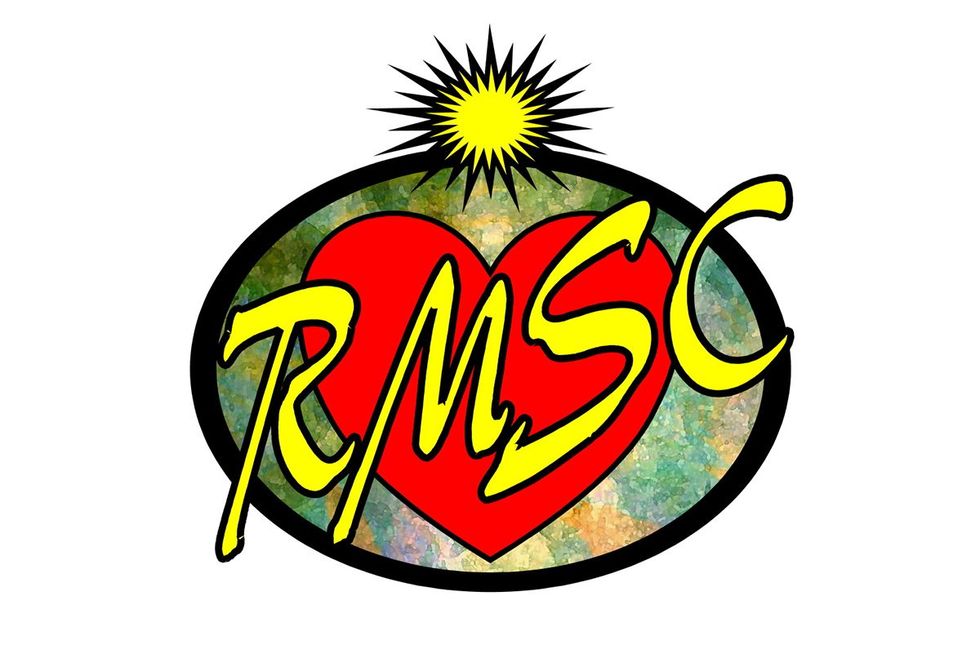
Learn More! rockymountainslides.com
Multi-Award Winning Singer-Songwriter Valeria Stewart Talks About Her Album, Raices/Roots and More!
By: Rick Landers
Images by: D.A. Peterson

has been making waves in the venues around the Washington, D.C. music scene for years. Although her local haunts are in the D.C. area, Valeria was born in Argentina and pays tribute to her roots with her new album presented in Spanish, and with a bevy of beautiful original and cover songs that highlight her mesmerizing vocals, as well as being grounded in the fine support from other local musicians.
Like many successful singer-songwriters, Valeria, has diligently worked her way performing at open mics, local venues, listening rooms and festivals. Her melodic and lyrical expressions have been recognized by winning 12 Mid-Atlantic Song Contest awards, for such tunes such as, “El Die Man Oscuro,” (The Darkest Day), New Miner’s Blues,” “Our Days in Ordinary Time,” and more.
Other highlights of her career were songwriting awards, that include being a 2021 winner in the John Lennon Songwriting Contest; a two-time SemiFinalist International Songwriting awardee (2021/2024) for her “New Miner’s Blues,” and “Ensueños” (Reveries) songs, respectively. And in 2025 she received an Unsigned Only Semi-Finalist award for her song, “Eyes Mi Amor” (You Are My Love).
Along with her passion for music, Valeria told us she’s able to find great balance in her “day job,” as a part-time pre-sch00l teacher at Kidstretch, a Falls Church, Virginia, preschool where she works supporting families in transitional housing.
“When I walk into work, I have to drop all pretenses, I am only there to serve the kids and support my coworkers. The phone and social media break, plus working for others is grounding.” – Valeria Stewart
Guitar International magazine is delighted to introduce Valerie and her beautiful music to our readers as her career takes off and her songs gain fans around the world,
******
Rick Landers: Let’s start out with your new release and your reasoning behind making it in Spanish. Was the decision based on cultural pride, or the world demographics to reach different audiences than typical here in the States?
 Valeria Stewart: It’s funny, I personally had no plan to go record an album or even an EP of all my Spanish material! I have been collaborating since COVID with my friend singer-songwriter Kevin Dudley, and we had recorded a bunch of material in my home studio, including some of the songs on the new album, to submit to the MASC (Mid Atlantic Songwriting Competition).
Valeria Stewart: It’s funny, I personally had no plan to go record an album or even an EP of all my Spanish material! I have been collaborating since COVID with my friend singer-songwriter Kevin Dudley, and we had recorded a bunch of material in my home studio, including some of the songs on the new album, to submit to the MASC (Mid Atlantic Songwriting Competition).
About a year ago, when we discussed going to record in a studio at some point, he suggested we prioritize work on a solo EP of all my best Latin songs. He’s been around the music world longer than me and his feeling was that the Latin genre and the songs themselves would really stand out, that is, reach a larger and different audience than some of the Americana style songs we’d collaborated on. Furthermore, I had been performing a handful of these songs in our combined music sets, with always positive praise from mostly American audiences, so it felt like a good next step.
Rick: Who are the players on the album and what did they bring to the table as far as their musical talents, and other strengths that helped make the project more enjoyable or challenging?
Valeria Stewart: The plan for the co-produced album, which started off as an EP until I added two cover songs, was to minimize recording studio time, and play and record the songs ‘live’ with a quartet of players that would be seasoned enough to rehearse a minimum of two live shows plus a home practice, plus work on their own.
The vocals are central to this solo project of course, and I play the rhythm guitar throughout the album. I am more accustomed to singing while playing, but have recorded separately, as well. For this record the plan was to ‘perform’ the way I usually do at shows, so simultaneously track vocals and guitar, with a minimum of tries to get things right, which is a challenge, but emits more of a live presence.
The lead guitar throughout the album was arranged and performed by Kevin Dudley, who’d been honing his classical guitar chops for a couple years and gave this whole record a distinct flavor which is not totally traditional. He’s a pretty versatile musician and blended a combination of flamenco, elements of blues, and samba rhythms on Raíces. Note his nod to Carlos Santana on the second interlude of Por Qué. I know by the end of the first day at Bias Studios (Springfield, Virginia), he was pretty worn out by the amount of intricate parts he had to perform! We aimed to getting all seven songs done in two days, and by day one had finished five, with a couple re-dos for day two.
Click here to view the embedded video.
The double bass was important for the style of this album, which is primarily acoustic with strong Latin rhythms. I had recently been performing from time to time with a local jazz guitarist named Pat Mackin, and I asked him one day if he played with any stand up bassists, and whether they’d accompany me on my songs some time, so that’s where I found Eugenio Ibarz.
Eugenio is from Spain, and has been playing in local jazz duos and trios for years, so he had a combination of skills and cultural knowledge to be a great fit for my music. He is a very intuitive player and we immediately got out to perform at cafes nearby, and with Pat’s help, organized the charts for dozens of my songs, including the ones on the album to be. He was enthusiastic from the start and was my first choice for recording.

Percussion is super important to these songs, as well, and I hadn’t yet played or met a ‘Latin’ percussionist so, as it was time to plan our recording a few months out, I went back to my jazz colleagues’ social pages to filter through and YouTube searches for locals who seemed like a good fit.
That’s how I found Jason Walker. He happened to be in a couple videos related to Eugenio, and coincidentally works at the same private D.C. school as him, so that all seemed to be a good sign towards working together on pretty short notice! He came to our first rehearsal at home with every Latin percussion option that could fit in his car probably.
My favorites ,of course, are the conga drums and bongos on the record. That combined with Eugenio’s bass make for some good dancing rhythms! Finally, on the last song, the Argentine “Zamba de Usted”, we tried with a track of clave at first, but the only true Argentine drum for a zamba is the Bombo Ligüero, a large, traditional folk drum made from a hollowed-out tree trunk with a head made of cured animal skin. It’s a fundamental instrument in Argentine folklore, so at the last recording session at Bias a few weeks after the main recording, I brought in local Argentine percussionist, Juan Megna, a colleague of Eugenio’s in the world of local jazz players.
Click here to view the embedded video.
Rick: Do you come from a musical family or are you the artistic one in the family?
Valeria Stewart: My parents were always big music lovers. My mother sang and hummed along to radio songs, and dad, I discovered coming home from college, had an extensive vinyl collection, including American folk heroes Dylan, Baez, etcetera and also an eclectic jazz and classical mix I learned to love.
Dad knew a few basic guitar chords and would play some Argentine folk tunes during parties at home in Maryland. We grin at those memories because he couldn’t really sing in tune, but it never stopped him! My maternal grandmother was a good pianist, and performed in what were basically house concerts, sometimes with singers in her neighborhood of Buenos Aires. I began as more of a visual artist, and studied Graphic Design in college, but was never far from my guitar since about age 12.
Rick: I’d guess that most of your local audiences are English speaking and wonder how your new songs translate emotionally to them when they may not understand the lyrics?
Valeria Stewart: Surprisingly what I noticed in the last couple of years, was that American audience members’ reaction to my Latin songs was “I don’t know what words you’re singing, but the sound and quality of your voice in Spanish, and the music, is something very beautiful/unique, and I want to hear more”.
 No one specifically asked for a translation, but I decided to start bringing little handout sheets to shows, like a program, with song titles and descriptions, not word by word translations which is very hard to do. Friends and audience members had a very positive reaction to that, so I’ve used them for many shows since, and provide the download on my website under the “MUSIC” menu.
No one specifically asked for a translation, but I decided to start bringing little handout sheets to shows, like a program, with song titles and descriptions, not word by word translations which is very hard to do. Friends and audience members had a very positive reaction to that, so I’ve used them for many shows since, and provide the download on my website under the “MUSIC” menu.
Rick: What have been some of the most challenging times you’ve had being creative or inventive, learning the business side of music, or figuring out the technical aspects of recording your music?
Valeria Stewart: The creative and inventive phase, even when I’m not songwriting, goes on through it all, but I have to say while releasing a new record, writing is definitely on hold. For me the techie stuff is not easy but I’d say I enjoy that kind of work. Since I started using GarageBand at my home studio, doing lots of demos with Kevin, submitting to all kinds of song contests etcetera, its been a great skill to learn.
As for the business side of it, I have a Bachelors of Fine Arts (BFA) in Graphic Design and I can’t think of a better space to use those skills now as I promote myself continuously; videos, posters, social media reels and posts, using photography and typography. The other side of music business, album and single releases, radio promotion, constant blowing your horn, I find pretty exhausting and on a good day, exhilarating.
CHECK OUT VALERIE STEWART’S YOUTUBE CHANNEL!
Rick: It can be tough to break into new territories beyond our local music communities. Have you developed some kind of strategic plan to grow your fan base outside the Washington, D.C., area?
Valeria Stewart: I have been fortunate to have a great power couple mentoring me – Lynn Veronneau and Ken Avis, who’s Antidote label I was invited to publish under for this album. They have been paving the way for me to get out to more audiences beyond where I’ve been performing. They were instrumental in me signing up for a world music radio promotion via Kari-On Productions, with among other goals, the hope that it will provide a wider audience and the potential to move my shows outside the D.C. an Virginia areas. I don’t have a strategic plan in place other than to keep playing and accepting as many offers as I can while keeping my part time assistant teacher job I so love.
Rick: What gear are you using when writing your originals, performing them or making them shine in the studio?
Valeria Stewart: I have gravitated to a couple simple tools – Voice memos always! To talk and record my thoughts while on walks, or write blurbs in one of my journals as they come straight out of my head. I sit for a half hour every day or so and just play guitar. It’s a stress release. I do some latest favorite cover, or polish up an old song if I’m not writing new material. To polish up a song, I use either a blue mic connected to my iPhone, to listen back to things I’m trying, or a condenser Ear Trumpet Delphina model I have plugged in and ready to use with a small wireless Bose S1 right in my office/studio.
That is my preferred practice technique, since it gets my ears into that amplified space, and ready for whatever type of performance. I often move voice memos or Blue mic recordings to GarageBand and EQ them a bit, to have good quality practice tracks to share with band members.
Rick: Singer-songwriters tend to steer toward certain types of guitars when it comes to their sizes, tone woods, or even favored brand names. What are your preferences? Do you use any pedals and what about amps?
Valeria Stewart: When Steve and I were first married, in 1992, I started playing guitar again after a hiatus. We went to a little shop in D.C. and bought a classical nylon-string Esteve from Spain. I used to show up with it at local CABOMA bluegrass jams—definitely an oddball choice for that scene. It was the only guitar in our house for years. It got pretty worn by the time I shared it with my teenage son, Matt, but by then I had my first Taylor: the BBT. It was beautiful—very bright—and it marked the start of a new phase.

Around our twentieth wedding anniversary, in 2011, we bought my Gibson Hummingbird. That was the first guitar I completely fell in love with. I even had nightmares about it being stolen at music festivals. I brought it everywhere. It has its share of dings from all the travel and gigs, but it still sounds gorgeous. It matched my voice really well—full, but not overpowering.
Once a year, we travel to southern France, where my father last lived before he passed. While he was alive—and even after—I’d bring a travel-size Taylor Mini along. It was perfect for flying: small enough to store easily onboard.
In 2023, I went to Nashville for the first time to attend the Americana Music Conference. While I was there, I wandered into Gruhn Guitars and ended up buying what’s now my favorite guitar: a small-body Martin 00-18. Just five months later, I had to undergo major corrective back surgery for a degenerative condition that had finally reached a breaking point.
During the long recovery, the only guitar I could physically manage; light enough, small enough to cradle against my sore body was that Martin. It became part of my healing. I’m 100 percent better now and still gig with it regularly.
About a year before I found the Martin, I’d also picked up a Cordoba, part of the Orchestra CE Fusion series. It reminded me of that old Esteve I started with, and it’s the guitar I used to record the Zamba on the Raices album.
I don’t use pedals, but I always bring my Fishman Platinum preamp for performing.
Rick:There are several types of venues and they all have different “feels,” like listening rooms (house concerts), bars, wineries, festivals and more. Do you have a favorite and what is it that gives you the best comfort level?
Valeria Stewart: I have had the chance to play at all of these types of venues and I’d say bars are my least favorite because of the obvious; I am not presenting loud bar or dance/party music, and prefer to have audiences who listen to and appreciate lyrics and the groove, which are important. I
had fun playing at a small winery in Markham, Virginia, called Naked Mountain Winery the last couple of years with my Crooked Sparrow trio, and festivals have always been a great experience. Some of the most intimate and meaningful connections I’ve felt with an audience have been during house concerts and, more recently, at the Creative Cauldron theatre. During a sold-out show in that 108-seat venue, I felt completely surrounded—by friends, family, and new followers. It was a truly special night, full of warmth and positive energy.
Rick: Being an “all rounder” musician demands not only having a creative talent, but also developing a stage presence, along with the mundane tasks involved in the business aspects of the job. What elements of being a working musicians have been the most challenging?
Valeria Stewart: Musically, I’m always preparing, practicing, listening. So, the most challenging has been learning to have a good stage presence, to be in the moment, and totally prepared and relaxed so that the audience comes along for the ride and relaxes too. It’s amazing how effective it is to smile out there at someone while you sing to them if you’re calm enough.
I’ve been an introvert that learned to be extroverted because I wanted to do this art form so badly. I found a method that works for me, just like in songwriting. That is, stay honest, authentic, and vulnerable.
I spend moments before big shows meditating, envisioning myself talking and telling my life stories in front of people, in my style, so I try it all out in my imagination, even using notes and a journal I brought with me on stage at the Cauldron, to keep grounded and read aloud words or stories that I didn’t want to screw up! And when you do mess up it brings you down to earth anyways, I think people appreciate vulnerability in the stage banter as long as when you’re performing you’re in the zone.
As far as mundane tasks involved in the business aspects of the music work, I work 20 hours a week max at my pre-k job for a reason, because it gives me two full weekdays to accomplish the mundane stuff needed for a DIY musician to maintain a presence on and off line, to pursue leads, booking inquiries, promo promo promo!
It feels like you hit a wall some days, but after a few years of getting better opportunities, venues do come back and they reschedule you for presenting good quality programs, being on time and organized, and for doing the ‘work’, promoting on all the channels etcetera.
Rick: I understand that you were born in Argentina. Have you had an opportunity to perform there or is that one of your dreams?
Valeria Stewart: I brought my travel guitar on my last trip there in 2024 and it had been like 11 years since my last visit. I signed up on line for an open mic in town, and just showed up to play late at night, with the house band. It was a lot of fun and more loud and electric than I’ve ever sounded, but I do think it would be even better to set up a few gigs before hand!
I made contact with a young pianist from Buenos Aires who had performed at Takoma’s School of Musical Traditions stage one night as part of a Tango presentation, and we messaged back and forth about setting something up last visit, but it was December, holiday time, lots of folks leaving town or venues already booked. So I need to get proactive before our next trip.,
Rick: Now that your roots album is released, do you have another group of songs in mind for your next album or single, and do you think you’ll venture into another style of music or working with musicians that may play unique instruments to add a different flavor to your work?
Valeria Stewart: As a matter of fact I’ve started recording a new batch of songs, both older and new, in collaboration with Leandro Alvarez, an Argentine producer based in L.A. We met by chance in May at a fundraiser in Potomac, Maryland, where I performed a few songs alongside him and legendary accordionist Chango Spasiuk.

Leandro expressed interest in producing an EP of my music for next year. So, we began working together remotely, one song at a time, to explore the potential of the collaboration. This is my first time creating music in this way—without being physically present to discuss and shape a song’s direction—but it’s become an artistic stretch that feels both challenging and creatively rewarding.
It’s also been meaningful to collaborate with someone who shares my cultural heritage, but brings a fresh and different perspective. The songs I’ve focused on share the theme of flight and flying. We’ll see where this all goes…just trying something new!
Rick: Have any shout-outs to friends, family, musicians that have helped you along the way or who’ve given you the confidence needed to sustain a music career?
Valeria Stewart: Oh, absolutely! In the beginning of the 00’s I started out singing harmonies and playing with my sister in-law Sherry, who is now in a group called Sunny at Midnight. She and I would play at the Reston-Herndon Folk Club and eventually started a band called The Stewart Sisters with bandmate, and your current dobroist, Jim Nagle! Thanks to both of them and Annie Jones our bassist, for a beautiful collaboration and first CD together in 2017, Another Place & Time, at Les Thompson’s Cabin Studios, with all of our gigging cash in hand.
Jen Smith joined the sisters band on fiddle and Niels Jonker on bass to complete our sound. They have each been amazing humans and supportive friends to collaborate with.
I also met and befriended my future duo partner songwriter, Kathleen Huber, though the Reston-Herndon Folk Club scene. In 2018, we started a collaboration as the duo Luna. By the Fall of 2020 we went on to co-write several Mid-Atlantic Song Contest awarded songs, win an Arlington Arts grant, and publish an EP, The Alchemist’s Journey, before our partnership culminated in Kathleen’s move up north. I am grateful for her fine example as a songwriter and for sharing in this part of my growth journey as an artist.
Before I mention singer-songwriter Kevin Dudley I have to first thank Val Makepeace and his sweet, spunky, artist wife and music supporter who I got to make friends with first. Val has been the first to hear new songs and is the most excited cheerleader for all of my andour musical endeavors, and, she introduced me to Kevin.
He and I began to collaborate in 2021, started a trio called Crooked Sparrow with Jen Smith on fiddle, and have co-written a bunch of songs, favorites being “New Miner Blues”, “El Día Mas Oscuro”, and “Yellow Flowers”. Kevin also has been a mentor, teacher and collaborator on my journey. He taught me some pretty cool jazz guitar chords after he got tired of hearing me play ‘cowboy chords’ long enough. I’m especially grateful for his suggestion and help in producing this latest album.
Grey Jacks came into my life at a time when I was needing moral support and friendship, and has been an incredible friend, talented singer songwriter, duet partner with an amazing voice and positive, forward moving spirit that is so intoxicating. When I needed harmonies for this album, I didn’t have to look far.
Thanks to my mom, ‘Grace’ Graciela, who had such great lines to add to some of the songs on the album. I’ll always remember being with her and giggling happily as we cobbled a phrase together to complete a song I needed help with it in Spanish. It’s not quite the same when she’s not at a show, and at 88 she’s made it to a lot of them!
Click here to view the embedded video.
Big thanks to my friend Ken Avis and his wife Lynn Veronneau for picking me up on their Antidote label after hearing some rough tracks from the studio. More than that, Ken has been incredibly supportive, curious, and encouraging of me personally as a musician over the past few years. He’s witnessed my transformation and growth, and his belief in me has meant the world. Validation is a gift — and I’m deeply grateful.
Last and most special person I want to thank is Steve, he’s the ultimate partner and friend. Helped me buy the first guitars, trudged along on gigs carrying my heavy equipment, put up with endless hours of practices and people coming and going, gives me honest feedback, and supports my crazy career choice, through thick and thin. There’s a reason so many of my songs are about him, he is the best.
Rick: There are different kinds of success and oftentimes the definition is personable and well-considered. For you, how do you define it and how do you manage to balance everything to reach your goals and not lose sight of it?
Valeria Stewart: Success is if you are happy doing what you love, and your art reaches people’s hearts in some way. Being paid to do all this is of course a measure of success, and being invited to bigger stages too, but I’m still a believer that you have to bring music to people as a gift sometimes, for spiritual support, and for building community.
I would do it regardless, it’s a sort of calling for me. Some of the moments that stick with me the most have been from quiet listening rooms to assisted living spaces, libraries, and seeing the calm it can bring, even in my littlest; the students I get to work with. I know life is not all about the music business and that is how I try and not lose sight of the joys.
Raíces | Roots Solo Album Out Now!
Ashdown Launches UK-Built Cabinets and Amps
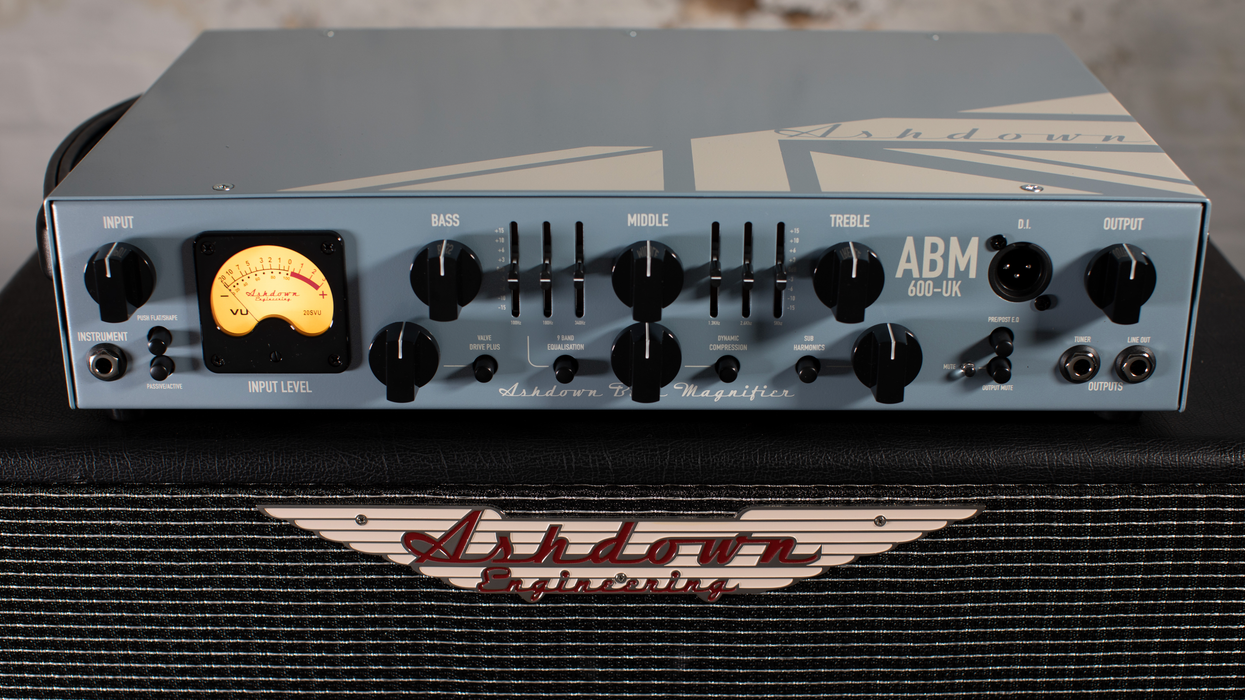
Ashdown Engineering has launched new amp and cabinet models to its flagship ABM range, now available in fully UK-built editions.
For over 25 years, the Ashdown ABM series has earned its place on some of the world’s biggest stage, trusted by professional bass players for its signature tone, flexibility, and reliability.
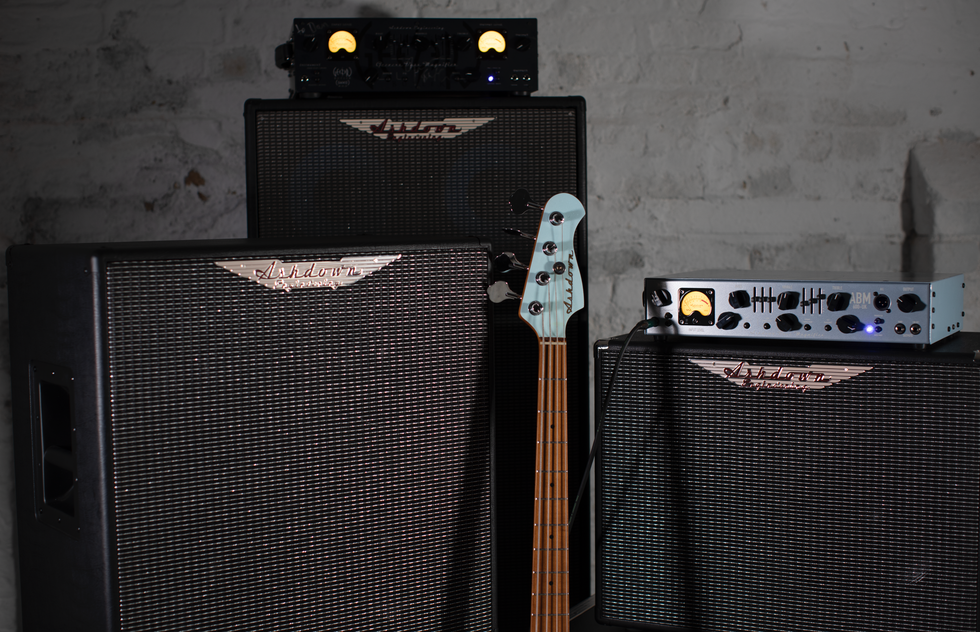
The new amps include the UK-ABM-300-EVO IV and UK-ABM-600-EVO IV. The cabinets include five newly re-engineered cabinets blending iconic ABM tone with state-of-the-art materials and superior construction, crafted entirely in the UK. The five models include the UK-ABM-810H-EVO IV, UK-ABM-410H-EVO IV, UK-ABM-210H-EVO IV, UK-ABM-115H-EVO IV and UK-ABM-112H-EVO IV.
Here are details on the two new amps. Delivering 300 watts of pure bass power, the UK-ABM-300-EVO IV combines heritage tone with modern control. Its class-leading preamp features the Variable Valve Drive Plus, giving players access to a broad tonal spectrum, from warm cleans to gritty overdrive, all foot-switchable for performance versatility. A brand-new 9-band EQ offers pinpoint tonal shaping, while the One Knob Compressor and Sub-Harmonic Generator ensure your bass remains rich, tight, and stage-ready. Professional connectivity, including FX loop, Line Input, and tuner out, make it a complete solution for live and studio applications.
For players demanding more headroom and authority, the Uk-ABM-600-EVO IV offers 600 watts of commanding power while retaining the full feature set of its 300W sibling. The enhanced 9-band EQ, signature VU meter, and foot-switchable controls for Valve Drive, Compression, EQ, and Sub-Harmonics allow seamless integration into any performance setup. Built for the modern bassist yet faithful to its roots, the UK-ABM-600-EVO IV represents the pinnacle of Ashdown’s amplifier design.
Amp specifications are as follows:
UK-ABM-300-EVO IV –
- Power Output - 300 Watt
- Speaker Outputs - 2 x Neutrick Jack/Speakon outputs
- Includes DI output, effects send and return
- Impedance - Minimum 4 Ohms
- Pre Amp Tubes - 1 x 12AX7
- H x W x D (mm) - 146 x 488 x 336
- Weight (kg) - 12.5
UK-ABM-600-EVO IV –
- Power Output - 600 Watts
- Speaker Outputs - 2 x Jack/Speakon outputs
- Includes DI output, effects send and return
- H x W x D (mm) - 146 x 489 x 336
- Weight (kg) - 12.5
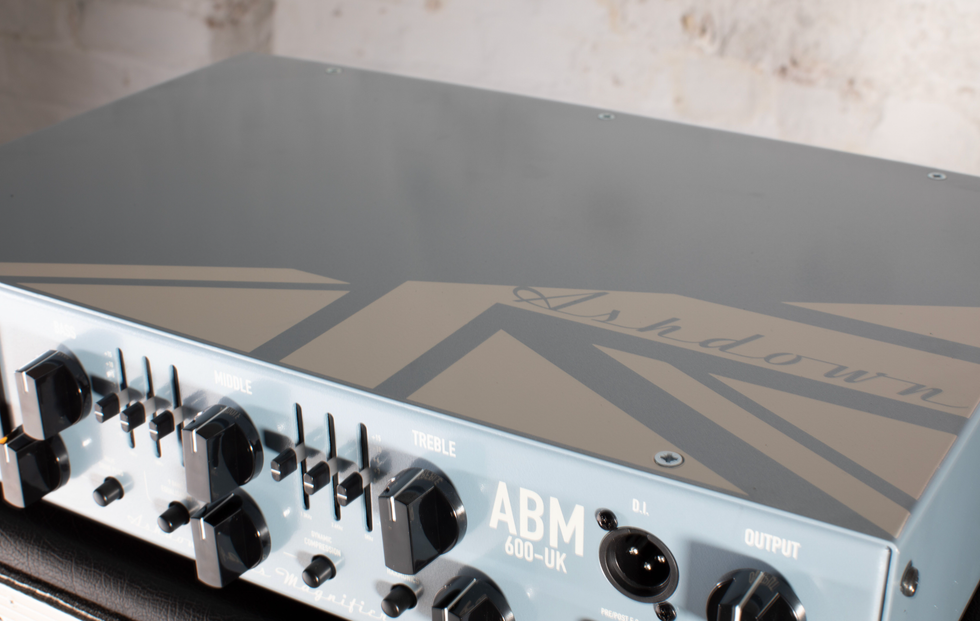
Here are details on the new line of cabinets.
- UK-ABM-810H- EVO IV, a powerhouse cabinet designed for commanding the largest of stages. Loaded with eight precision 10” ceramic drivers arranged in sealed chamber pairs, the UK-ABM-810H-EVO IV offers unmatched punch and midrange articulation. With a massive 2000W AES power handling and a switchable high-frequency horn, this is a cabinet built to deliver, night after night.
- UK-ABM-410H-EVO IV – A studio and stage staple worldwide, delivering tight response and 1000W AES of focused clarity from four 10” ceramic drivers.
- UK-ABM-210H-EVO IV – Half the size, all the tone. Ideal for smaller gigs or pairing with additional cabs, offering 500W AES.
- UK-ABM-115H-EVO IV – A 500W AES 15” cabinet for players who crave classic warmth and depth.
- UK-ABM-112H-EVO IV – Compact yet mighty, the new 300W AES 12” format is meticulously balanced and is already being heralded as the go-to cab for the range.
All cabinets feature genuine Neutrik Speakon connectors, are rear-ported for enhanced low-end performance, and are constructed from FSC-certified Mahogany plywood (or Latvian Baltic birch for the UK-ABM-810H-EVO IV) for unrivalled resonance and durability.
Cabinet specifications are as follows.
UK-ABM-112H-EVO IV
- AES Power – 300W
- Drivers – 1x12”
- Sensitivity – 98dB
- Impedance – 8 Ohms
- Magnet – Ceramic
- Dimensions (W x H x D) – 603 x 452 x 340 mm
UK-ABM-115H-EVO IV
- AES Power – 500W
- Drivers – 1x15”
- Sensitivity – 98dB
- Impedance – 8 Ohms
- Magnet – Ceramic
- Dimensions (W x H x D) - 603 x 452 x 340 mm
UK-ABM-210H-EVO IV
- AES Power – 500W
- Drivers – 2x10”
- Sensitivity – 99dB
- Impedance – 8 Ohms
- Magnet – Ceramic
- Dimensions (W x H x D) - 603 x 452 x 340 mm
UK-ABM-410H-EVO IV
- AES Power – 1000W
- Drivers – 4x10”
- Sensitivity – 102dB
- Impedance – 8 Ohms
- Magnet – Ceramic
- Dimensions (W x H x D) - 603 x 603 x 340 mm
UK-ABM-810H-EVO IV
- AES Power – 2000W
- Drivers – 8x10”
- Sensitivity – 105dB
- Impedance – 4 Ohms
- Magnet – Ceramic
- Dimensions (W x H x D) - 609 x 1150 x 415 mm
Hand-assembled at Ashdown’s UK headquarters in Essex, these amps and cabinets represent a renewed dedication to in-house engineering and local manufacturing. Every UK-ABM-EVO IV head is crafted with the same passion and precision that has defined Ashdown for decades.
For more information, visit: www.ashdownmusic.co.uk
Kirk Hammett says Tony Iommi uses “smart chords” – this is what he means

Over the years, Metallica and Black Sabbath have shared many stages; the heavy metal unit performed at Sabbath’s grand Back To The Beginning gig back in July, but they’d previously opened for Ozzy Osbourne back in 1986, while bassist Robert Trujillo was also an official member of The Prince of Darkness’s band between 1996 until 2003.
However, no matter how many times they performed together, Metallica never stopped being stunned by the talent within the Sabbath ranks. In episode 112 of The Metallica Report, Trujillo reflects on the unique style of each member of the band. “Take Bill Ward, for instance, as a drummer,” he says. “He’s so unique in his style of playing and that swing that he has, it reminds me of big band music… [Then there was] Ozzy with his very bluesy, soulful style of singing.”
He then points to guitar legend Tony Iommi and his own brand of ‘smart chords’. “His chords are – well, Kirk Hammett calls them smart chords,” he explains. “[They’re] basically jazz chords, which he incorporates into the riffs.”
Of course, Iommi’s style is partially the result of an injury he suffered as a 17 year old. Ever since slicing the tips of his fingers off at a factory job, he’s had to adjust his style, now playing with artificial leather fingertips. “Even just the fact that his fingers are different… it creates a certain sound, a certain riff,” Trujillo explains.
Elsewhere in the chat, Trujillo recalls how Ozzy’s wife, Sharon Osbourne, had initially labelled the band as an “alternative” act. “It was so different from anything that was happening back then,” the bassist says. “And there’s a lot of reasons for that… A lot of [their music] is just very unique, very soulful.”
Reflecting on Sabbath’s Back To The Beginning gig, Trujillo recalls it as being yet another reminder of why Black Sabbath are the crème de la crème of heavy metal. “They were soundchecking, and Ozzy wasn’t even on stage yet… but just hearing them warm up, it was another level,” he says.
“This is like Muhammad Ali [hitting] the speed bag – it’s that intense. It’s crazy… they’re just warming up – drum fills, some tribal beats Bill was doing, and you hear Geezer Butler [bassist] kind of noodling a bit. And then Tony [plays] some kind of chords here and there.”
He recalls watching the band run through Into The Void, a track that Anthrax would instead perform during the final show. A few members of the supporting bands watched the performance – and it was pretty emotional. “We just started headbanging, and we were all smiling… but some people were crying,” he notes. “It was so beautiful, and it was a powerful moment. Anybody that witnessed it, that’s something that they’ll probably remember for the rest of their lives.”
The post Kirk Hammett says Tony Iommi uses “smart chords” – this is what he means appeared first on Guitar.com | All Things Guitar.
“To me, progressive rock is very serious players who can really do their stuff”: David Gilmour “never thought Pink Floyd were prog rock

A conversation about prog rock titans is hardly complete without mention of Pink Floyd. But as David Gilmour explains in a recent interview with Rick Beato, he was never keen on the label.
He says that he and his bandmates “never talked about style”, and that they were creating the music they were creating “long before” the ‘progressive rock’ moniker came around.
“I’ve never talked about progressive rock, or thought that we were – whatever – progressive rock,” Gilmour tells Beato [via Louder Sound]. “To me, progressive rock is very, very serious players who can really do their stuff.”
“I think we were doing it long before the term ‘progressive rock’, and I think I was probably a grumpy old man in my 20s. You know, sort of, ‘Nah, that’s not us.’”
He concludes: “The whole idea of labelling – it’s become more essential in this day and age. But I’m not keen on it.”
Arguably, the genres by which certain bands are described are done so by fans, while artists both old and new prefer not to pigeonhole themselves as purveyors of one style of music only.
Regardless of Gilmour’s position on the ‘prog rock’ moniker, Pink Floyd are widely considered to have been behind some of the best prog albums of all time, including The Dark Side of the Moon, The Wall, and Wish You Were Here.
In other news, David Gilmour recently explained why he’s “never learned” the classic Pink Floyd guitar solo in Comfortably Numb.
“To me it’s just different every time,” he said. “Why would I want to do it the same? Would it be more popular with the people listening if I did it exactly like the record? Or do they prefer that I just wander off into whatever feels like the right thing at the time? I don’t know. I suspect they prefer it to be real, and to be happening, you know?”
The post “To me, progressive rock is very serious players who can really do their stuff”: David Gilmour “never thought Pink Floyd were prog rock appeared first on Guitar.com | All Things Guitar.
“The most important thing is to be able to hear something and play it”: Tim Henson on the importance of learning guitar by ear

What’s the most efficient way to become a better guitar player? Is it endlessly practicing scales and music theory? That certainly doesn’t hurt, but according to Polyphia guitar maestro Tim Henson, all guitarists should seek to learn as much as they can by ear.
While theory is no doubt important – and will help you better understand why certain note patterns and chord progressions work together – Henson says there’s a certain value to “learning everything you can by ear”.
- READ MORE: Strandberg launches N2 – the “most significant evolution” of its Boden headless guitars yet
“I started playing violin,” he tells The Music Zoo in a new interview [via Guitar World]. “Before I started playing guitar, I started playing at the age of three. I can sight-read violin pretty well.”
However, he says he learned to play guitar by ear, partly because “violin was so rigid, and it killed any sort of love for music”.
“It made me hate music,” he says. “Especially in classical music, you’re essentially just doing cover songs all the time. There’s no room for creativity. And when I picked up the guitar at 10, I saw it as an escape from that.”
Polyphia’s music is some of the most technically complex in the game, so for many guitarists, resorting to the tablature is a must. But Tim Henson says they should learn as much as they can by ear before checking the official tabs for accuracy.
“We sell our tablature,” he says. “It’s one of the things that helps us pay our bills, and I think it’s a great tool and a great helper. But for the young guitar players who want to play guitar, learn it by ear. Just learn everything that you can by ear.
“And if you want to get the tab afterwards to double check and maybe, if there’s something that you were struggling with that you couldn’t just quite get, sure, do it, but learn it by ear. That is going to be the most important thing for any musician is to just be able to hear it and to play it.”
The extent to which guitarists should know theory has long been a subject of debate. While most don’t discount the usefulness of theory entirely – some say it’s not necessary to make high-quality art.
Earlier this year, former All That Remains guitarist Jason Richardson said it’s not essential, explaining: “Remember, it’s called music ‘theory,’ not ‘law’.” And YouTuber Become the Knight explained how “you can have these tools in your tool belt and still make pretty mediocre art”.
A big advocate of knowing your theory, though, is jazz-funk maestro Cory Wong, who earlier this year slammed guitarists who don’t know every note on the guitar’s fretboard.
The post “The most important thing is to be able to hear something and play it”: Tim Henson on the importance of learning guitar by ear appeared first on Guitar.com | All Things Guitar.
Strandberg launches N2 – the “most significant evolution” of its Boden headless guitars yet

Strandberg has lifted the lid on N2, its new generation of headless guitars which represents its “most significant evolution yet”.
The N2 line debuts with two new models: the Boden N2 Original and Boden N2 Standard, both sporting an all-new arched body design, which brings the guitar closer to the player “for an even more comfortable and connected experience”.
- READ MORE: EarthQuaker Devices Easy Listening review – can an amp simulator this simple actually sound good?
Specs found on both models also include EGS Arc hardware – a full-body contact bridge system which maximises resonance and sustain while simplifying setup and maintenance – and a titanium-reinforced EndurNeck, with dual titanium rods for “unmatched stability, resonance and clarity across every register.
In terms of electronics, the Boden Original N2 is fitted with Strandberg’s POWR:D pickups – developed in partnership with Fishman. These deliver “distinct voicings for ultimate versatility: from fluid modern distortion to classic crunch and shimmering cleans”.
Meanwhile the Boden Standard N2 is loaded with Seymour Duncan Pegasus/Sentient pickups, offering “tight, punchy and balanced tones that adapt seamlessly from heavy riffs to pristine textures”.
Elsewhere, the Boden Original N2 features a chambered swamp ash body with a flame maple veneer – and comes in Black Denim Burst Satin and Sunset Coral Burst Satin – while the Boden Standard N2 sports a solid basswood body, and roasted maple neck and fretboard, and comes in Black Satin Metallic and Transformative Teal Metallic.
“With the N2, we’ve created the most refined Strandberg to date. It’s designed to feel like an effortless extension of the player’s creativity,” says Founder and Creative Lead Ola Strandberg.
“Every detail, from the arched body and titanium-reinforced neck to the new hardware and pickups, reflects our vision of building instruments that truly inspire musicians.”
Both the Boden Original N2 and Boden Standard N2 are available now in six-, seven- and eight-string versions. For more info, head to Strandberg.
 Credit: Strandberg
Credit: Strandberg
The post Strandberg launches N2 – the “most significant evolution” of its Boden headless guitars yet appeared first on Guitar.com | All Things Guitar.
EarthQuaker Devices Easy Listening review – can an amp simulator this simple actually sound good?

$99/£115, earthquakerdevices.com
Maybe modern life really is just too complicated. Annoyed that your five favourite TV shows are on five different streaming services? Exasperated that there’s an app for everything even if it doesn’t need one? Bemused by the complex control arrays and secondary functions of digital amp simulators? The EarthQuaker Devices Easy Listening is here to help… well, with that last one anyway.
- READ MORE: Walrus Audio Mako Series MkII ACS1 review: “this is as good as digital amp and cab simulators get”
Fully analogue and fuss-free, this one-knob wonder is designed to make it as easy as possible for you to enjoy playing the electric guitar – with or without effects pedals – in silence. And considering it’s made in the USA, it’s as cheap as it is straightforward.
EarthQuaker Devices Easy Listening – what is it?
Is a pedal even a pedal if it doesn’t have a footswitch? That’s the level of simplicity we’re dealing with here: power it up, plug a guitar in on the right and some headphones on the left, then turn it up to one notch shy of permanent hearing damage – congratulations, you have now explored the full functionality of the Easy Listening.
Tonally it’s based on the legendary Fender Deluxe Reverb, so that should mean plenty of top-end chime and a sweetly scooped midrange. Will it also mean a lovely bit of crunch when you crank it? Nope, because there’s no crank to crank: that single control is for output level, not input gain, and we’re promised lots of headroom to ensure it’ll stay clean and take pedals without getting squishy.
The output is a proper quarter-inch type, and this can also be fed to an audio interface for direct recording. It’s TRS so you could even send it to two channels, though as this is a mono device that’s not exactly a major selling point.
 Image: Press
Image: Press
EarthQuaker Devices Easy Listening – what does it sound like?
In a sense, the words ‘pure’ and ‘basic’ mean the same thing… but with very different connotations. So yes, the fixed tone of the Easy Listening is pure – it’s clean and bright in classic black-panel Fender style, with a nicely rounded bottom end – but it’s undeniably a little bit basic too.
Maybe a better word is ‘unrefined’: natural compression is a key feature of small amps like the Deluxe Reverb, but here the dynamics are left wide open – which might be why you still get a hint of the dreaded plasticky DI ‘slap’ when you attack a note or chord. This is most noticeable with bridge humbuckers, which can sound alarmingly raw. The good news is, adding dirt pedals definitely helps – and all that headroom does indeed offer a giant playground for them to run around in. Overdrives that prefer some amp gain to work with might feel somewhat exposed here, but it’s a reliably blank canvas for everything else.
As for recording… well, I wouldn’t use it for anything important, but my test tracks ended up sounding quite respectable with a bit of software compression and reverb plus a slight EQ dip around the 2.5kHz mark. A decent result, then, but don’t throw away your favourite digital amp sim just yet – sometimes it’s good to be complicated.
EarthQuaker Devices Easy Listening – should I buy it?
Be warned: there’s much more to a good amplifier than EQ filtering, so a simulator as stripped-back as this is never going to get you the whole amp experience. But the Easy Listening is pitched as a handy little practice gadget – albeit one with solid made-in-America pedigree – and that’s exactly what you’re getting.
EarthQuaker Devices Easy Listening alternatives
Most modern amp sims are very much digital affairs, but there is a powerful analogue contender in the DSM & Humboldt Simplifier MkII ($359/£349) – and an old-school survivor in the battery-powered Electro-Harmonix Headphone Amp ($52.60), which presumably only exists because they forgot to discontinue it.
The post EarthQuaker Devices Easy Listening review – can an amp simulator this simple actually sound good? appeared first on Guitar.com | All Things Guitar.
Stompbox Offers Early 90's Ultra Gain Tones
12 Stompbox Tones In One Plug-In
Gear Finds: Pickups and Guitar Upgrades
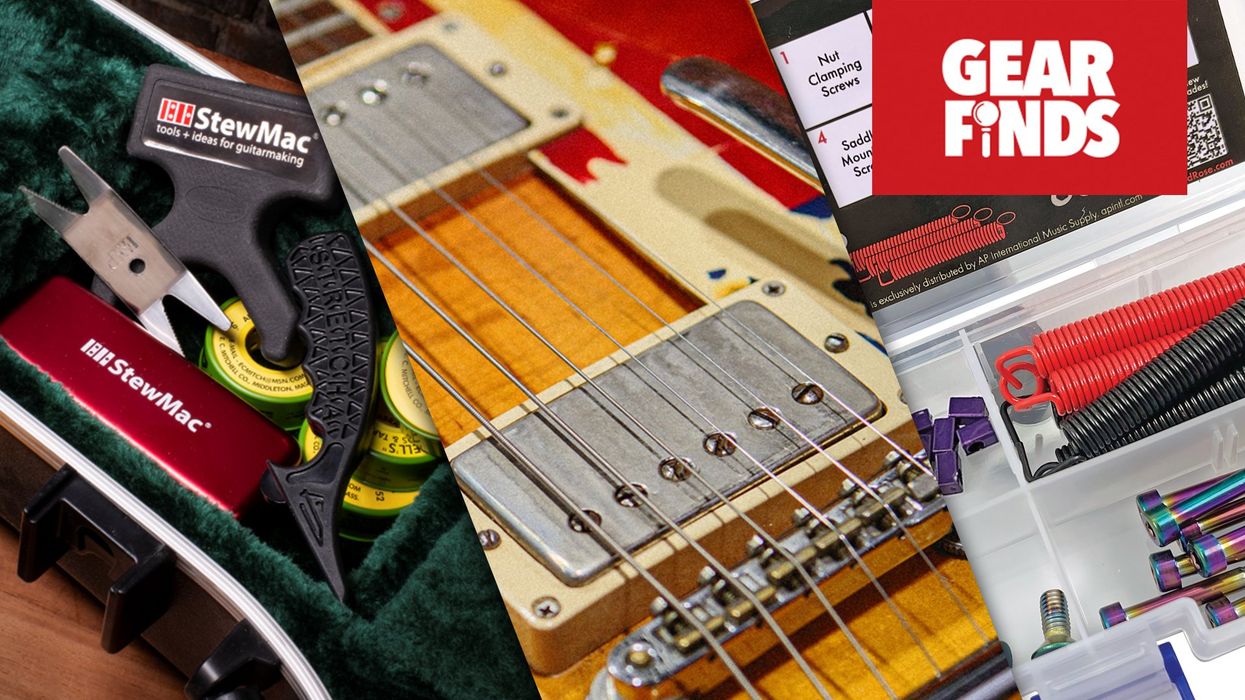
Unlock your guitar's true potential with the Fralin Pickups Push-Pull Blender Pot! Blend tones, split coils, and explore endless sonic possibilities without permanent changes. Ready to elevate your sound? Check out the Joe Bonamassa Humbucker Set and more gear to keep your music alive!
Fralin Pickups
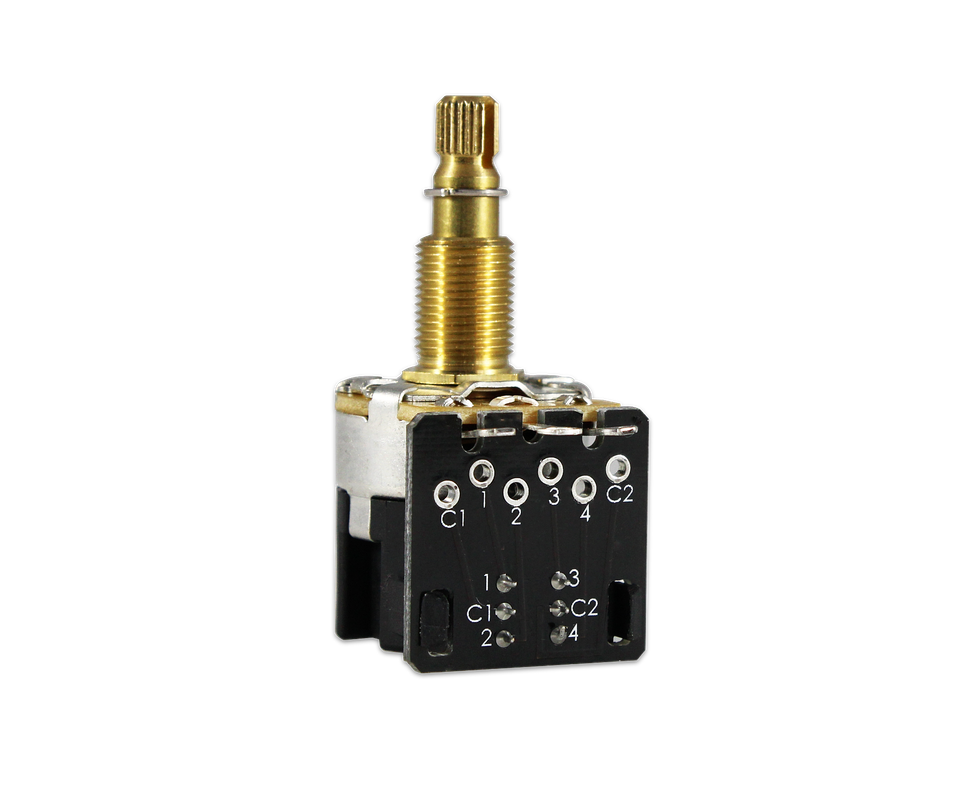
Push Pull Blender Pot
Unlock a wider range of tones with the Fralin Pickups Push-Pull Blender Pot. Compatible with guitars and basses, this versatile control blends pickup outputs, adds coil-splitting and out-of-phase options, and enables many wiring mods—giving you flexible, player-friendly tonal shaping without permanent changes to your instrument.
$25 street
Graph Tech
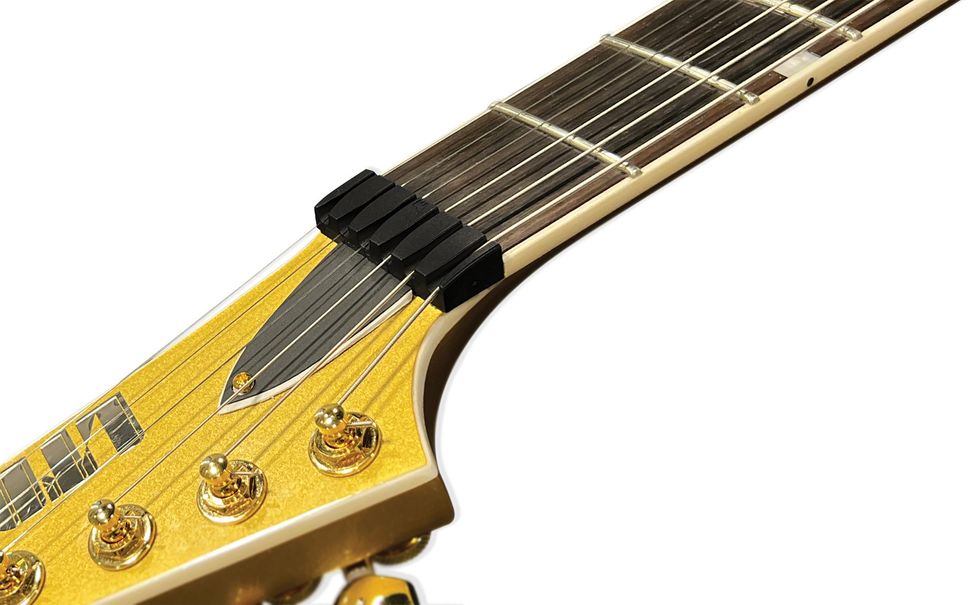
Un-Lock Nut
Unlock your nut and release the beast!
$35 street
Seymour Duncan
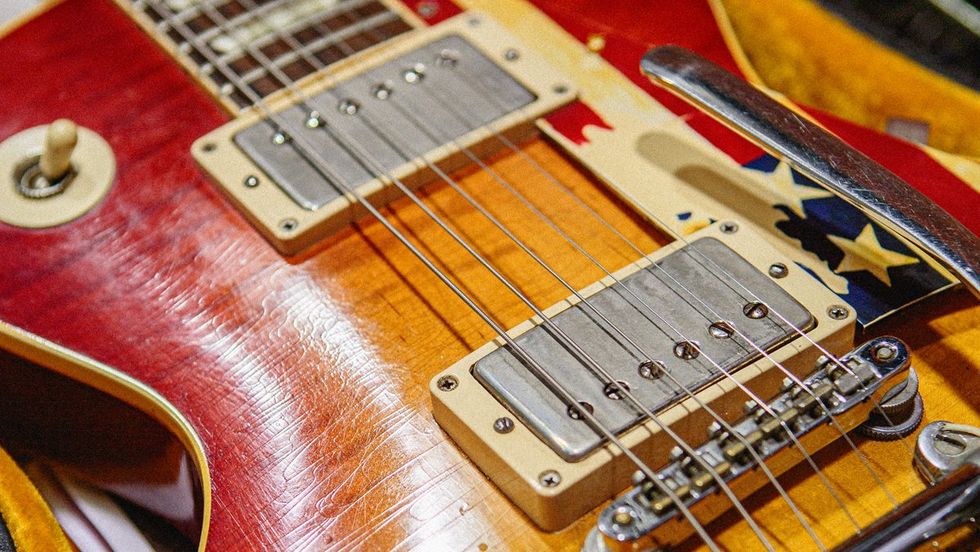
The Joe Bonamassa “Bolin Burst” Humbucker Set
Joe Bonamassa has long been a fan of Tommy Bolin, whose work influenced generations of guitarists. After a 10-year search, Joe acquired Tommy’s 1960 Gibson Les Paul and worked with the Seymour Duncan Custom Shop to recreate these P.A.F.s. The first 500 sets are signed by Joe and Seymour Duncan.
$375 street
StewMac
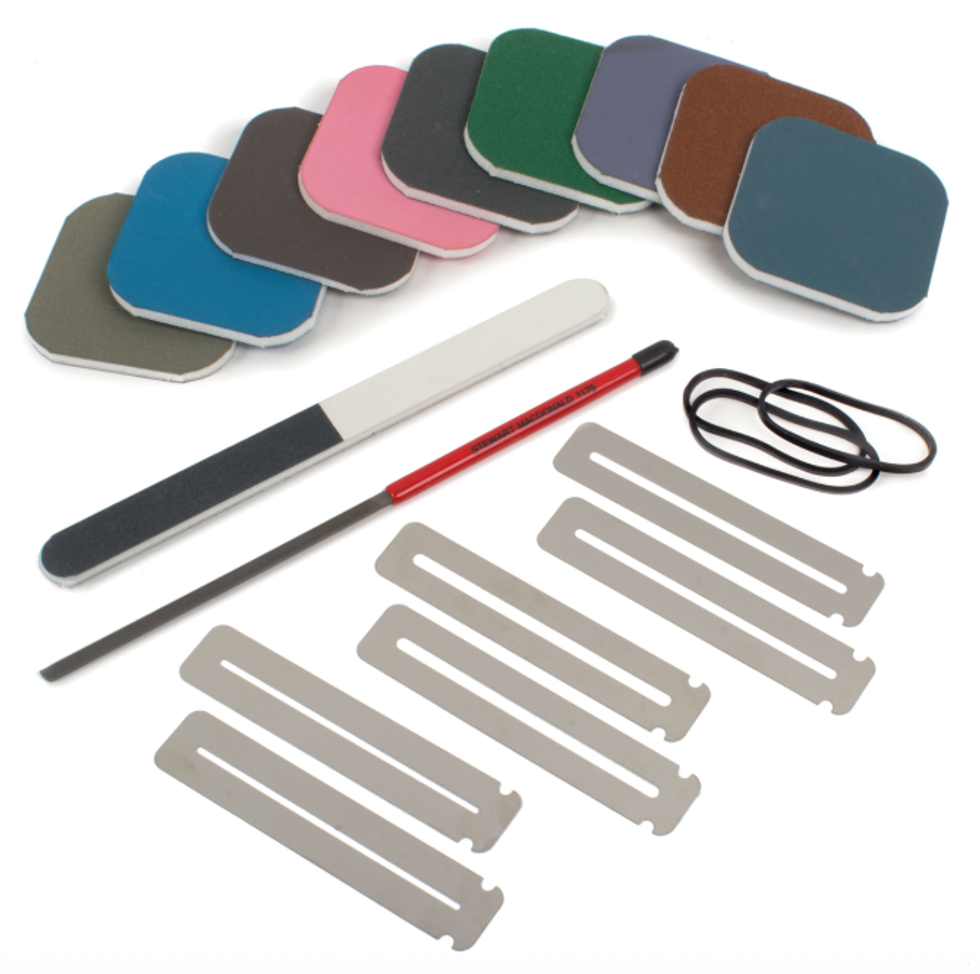
Rough Fret Smooth + Shine Set
Don’t let fret sprout stop you from playing your favorite guitar. This kit has everything you need to fix it yourself. When dry weather comes around, your fretboard can shrink and the fret ends poke out. Sharp fret ends can slow you down, feel uncomfortable, or cut your hand.
$69 street
StewMac
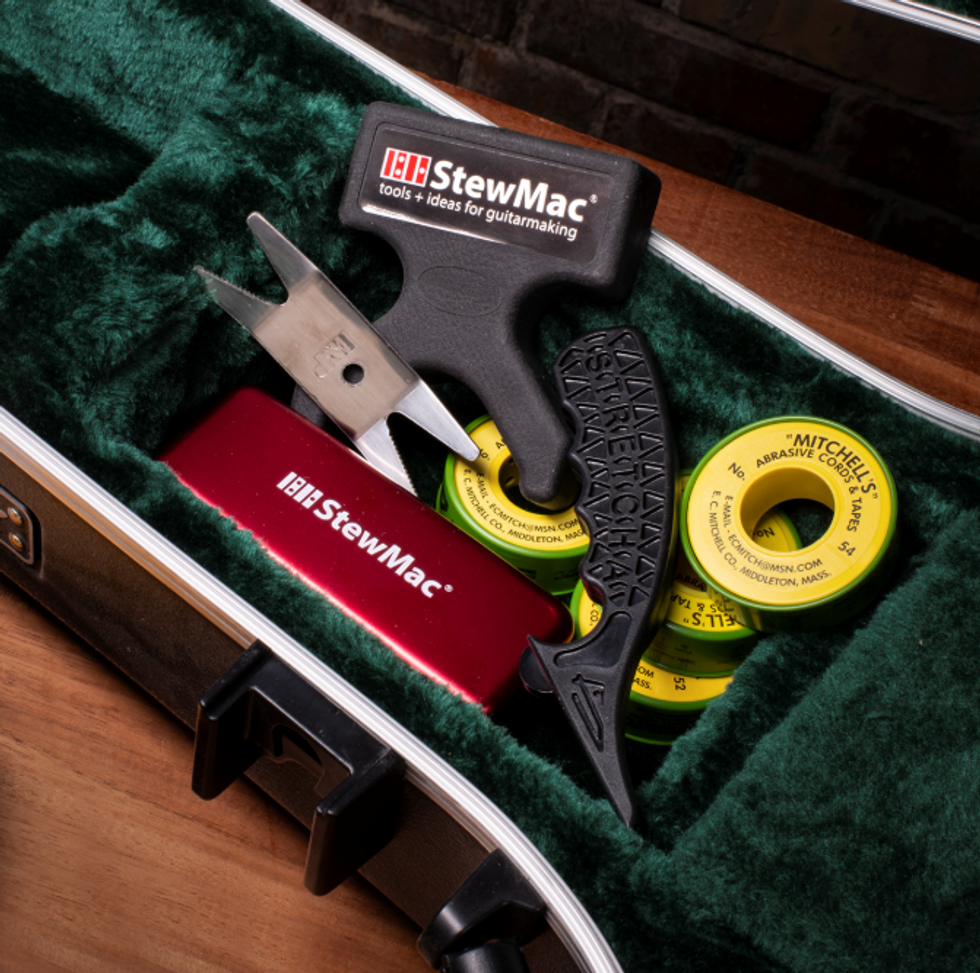
StewMac Guitar Tech Case Candy Set
When performing live, the small problems can turn a great show into a nightmare. A loose screw, slipping string, or guitar poorly leaned against an amp can create major stress. So, we created the Guitar Tech Case Candy Set—a compact collection of essential tools designed to keep your guitar stage-ready.
$140 street
stewmac.comFloyd Rose
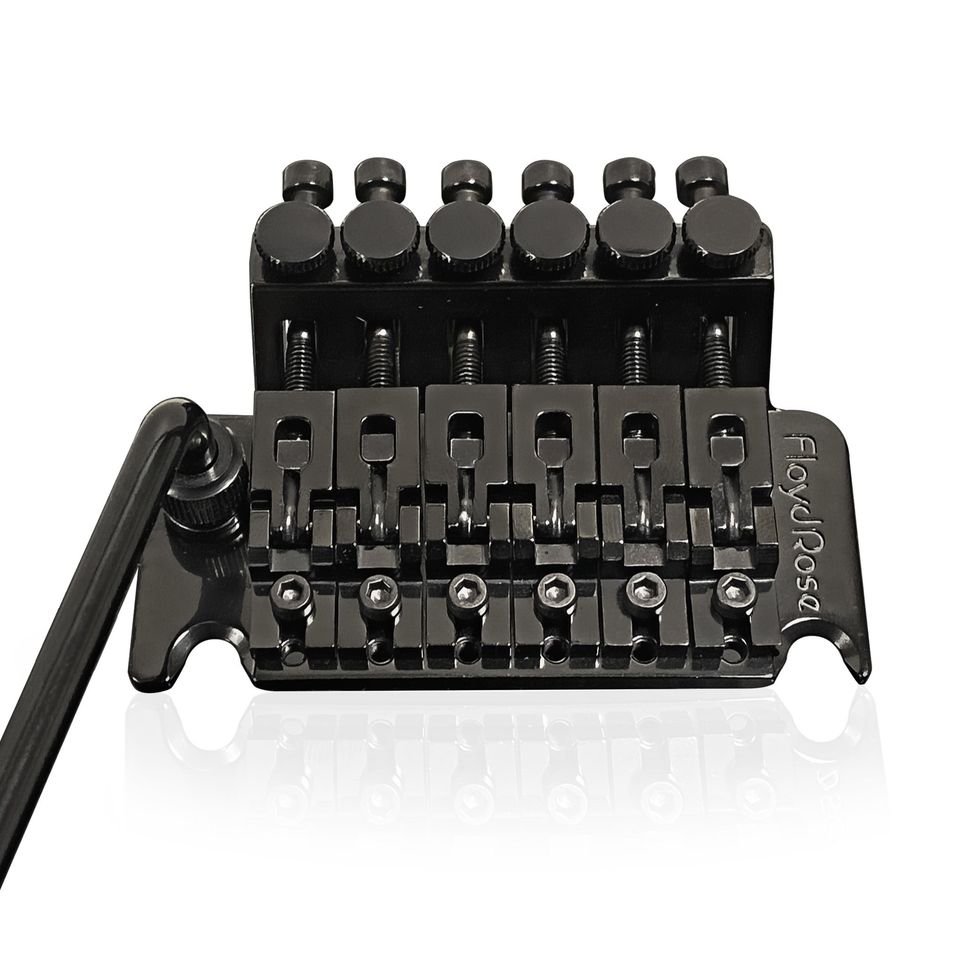
USA Original Radius Saddle Sets
Designed for matching specific fretboard curvatures, Floyd Rose Original saddle sets now offer several radius options without the need for individual saddle shims. Crafted in the U.S. from high-quality tool steel using precision CNC machining, the saddles are then heat-treated and plated to withstand the demands of the heaviest performers.
$110 street
Floyd Rose
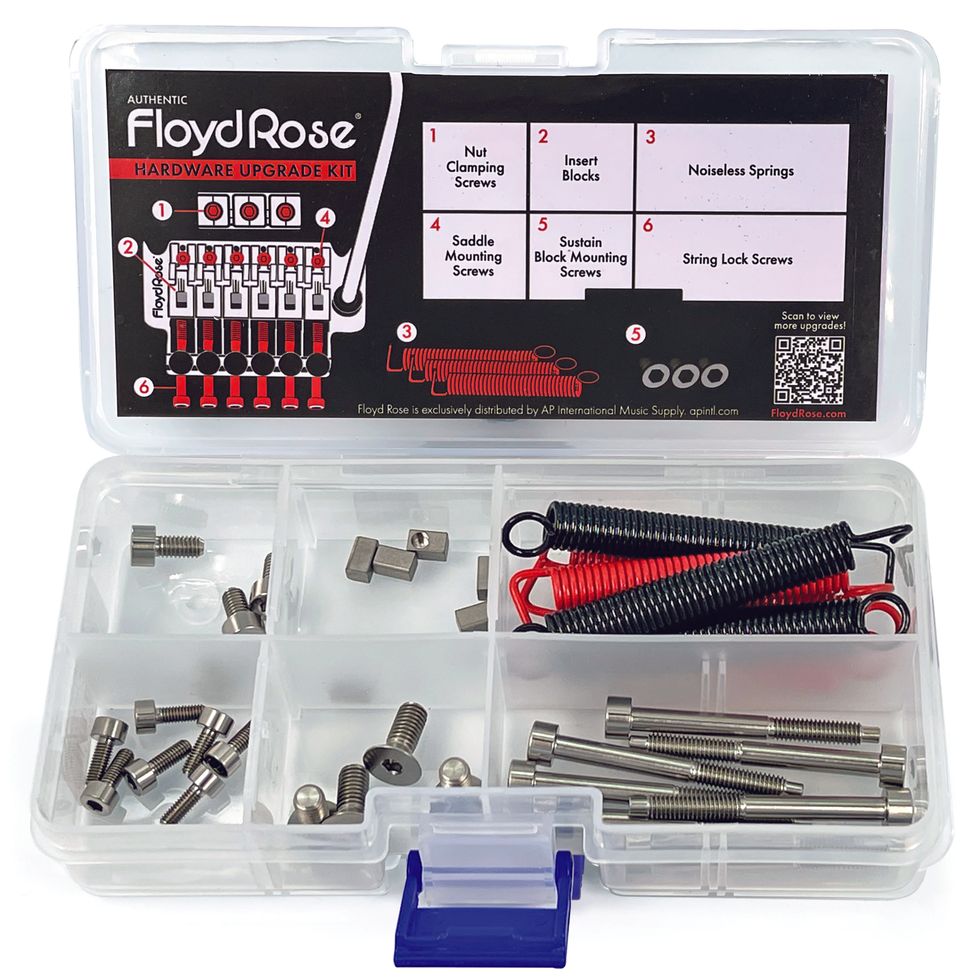
Hardware Upgrade Kits
Introducing authentic upgradable hardware kits for FR Tremolo Systems, available in eight stainless steel finishes as well as titanium. Each hardware upgrade kit comes with seven string-lock screws, seven saddle-mounting screws, four nut-clamping screws, four block mounting screws, and string lock insert blocks.
$63 street
Check Out This Pristine 1959 Les Paul Custom
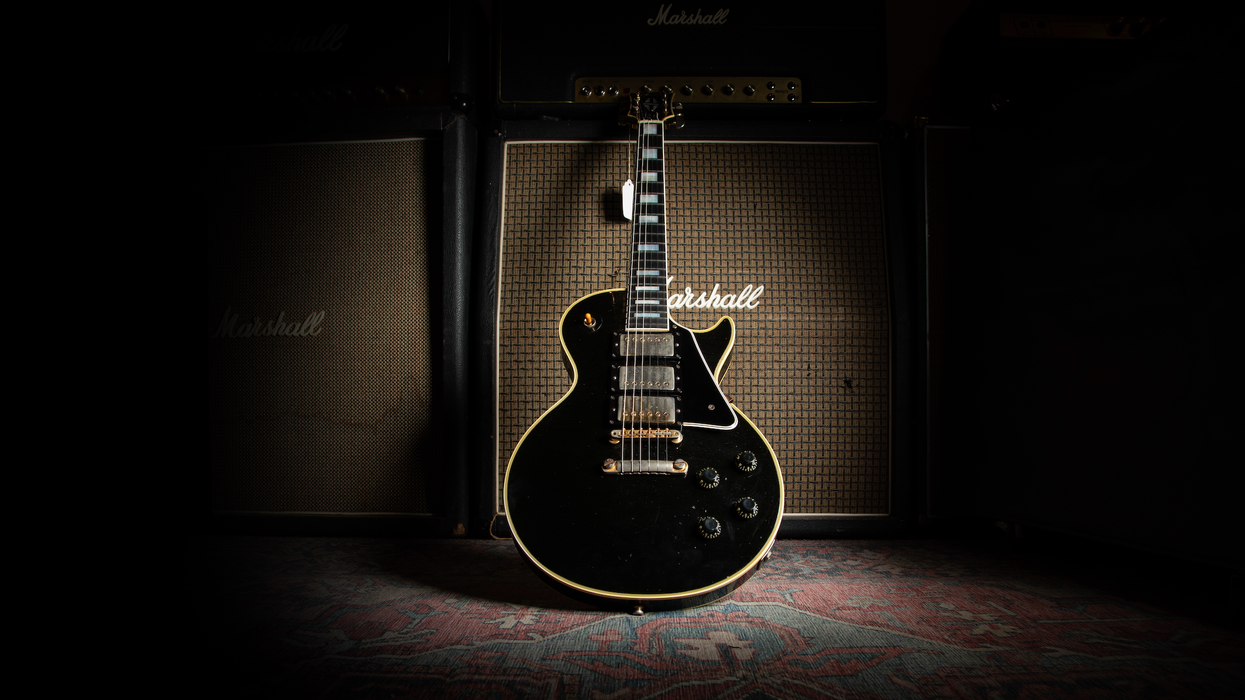
It’s been a minute since we’ve gotten to share something truly special with you all, and today’s subject is one of the finest: a 1959 Gibson Les Paul Custom.
Gibson introduced the first Les Paul Customs in late 1953, following a couple of prototypes built for Les Paul a year earlier. Les wanted what he called a “more elegant” version of the Les Paul Standard, something that looked sharp on the booming new medium of television. His request was specific: a black guitar with refined appointments and design tweaks to match his playing style.
The original Customs carried two pickups: an alnico “staple” single-coil in the neck and a P-90 in the bridge. They featured black finishes, white binding, gold hardware, and the split-diamond headstock inlay we now associate with the model. The headstock was slightly larger than the Standard’s, and the carve at the scarf joint was lengthened for easier play near the nut.
Perhaps the most distinctive feature was the fretwork. Les requested low, wide frets, which led to the nickname the “Fretless Wonder.” While iconic, these frets can feel unusual to modern players. Still, Les’ highly developed technique probably made frets almost unnecessary for him. Another major innovation appeared on the Custom: the debut of the ABR-1 Tune-o-matic bridge, finally giving players accurate intonation adjustment.
Here’s an interesting twist in the Custom’s story. Les’ original vision called for the Standard to be built from solid mahogany with a gold-painted top, and the Custom to use a maple cap on mahogany, finished in black or white. Gibson flipped those specs. The production Standard ended up with a maple cap, while the Custom was built entirely of mahogany.
The all-mahogany build gave the Custom a darker sound, so Gibson used an ebony fretboard to restore some brightness. Meanwhile, the maple-topped Standard was paired with a warmer Brazilian rosewood ’board. Ironically, it wasn’t until 1968 that the Custom attained the maple top Les had wanted all along.
“Instruments like this inspire players across generations.”
The next major leap came in 1957, when Gibson introduced Seth Lover’s groundbreaking humbucking pickups. By mid-year, the Les Paul Custom carried not two but three humbuckers. This gave players a wide tonal palette spanning jazz, pop, country, blues, and eventually rock. In time, artists like Keith Richards and Jimmy Page made unforgettable recordings on Customs, further cementing the model’s place in music history.
That brings us to the stunning 1959 Les Paul Custom currently here at Carter Vintage. I had the chance to spend a morning with it, and it’s easily one of the best-playing guitars in the shop.
Remember my earlier complaint about the “Fretless Wonder” frets? This one has been given a perfect refret by our repair shop. The result is transformative. Suddenly the Custom plays effortlessly, like a hot knife through butter. The setup is dialed in to perfection, and honestly, I walked away a little jealous. It convinced me that a couple of my own guitars need some attention from our techs.
Plugged into a Deluxe Reverb, the guitar absolutely sang. The original PAF pickups deliver remarkable clarity and punch. There’s excellent balance between the bridge and neck, and the middle position, often prone to phase issues, sounds smooth and full-on. Perfect for bluesy bends or country runs.
The neck deserves its own praise. It’s the quintessential ’59 carve: not too big, not too thin, with shoulders that make it feel more manageable than its actual measurements (.89" at the nut, 1.01" at the 12th fret) suggest. Simply put, it’s a neck that disappears in your hands, feeling comfortable, fast, and inspiring.
This particular Custom has been thoughtfully maintained. Aside from the refret and a new nut, the electronics and pickups remain untouched, and the finish is all original and in excellent condition. At about 9.5 pounds, it’s substantial, but its balance makes it feel lighter than the number on the scale suggests.
The Les Paul Custom has always been a guitar steeped in history. Born from Les Paul’s vision, refined by Gibson’s innovations, it was carried into legend by the players who made it sing. This 1959 example embodies all of that and more. With its perfect refret, killer PAFs, and ideal ’59 neck, it’s a joy to play and living proof of why this model continues to hold such a revered place in guitar history.
For me, it wasn’t just another morning with a guitar—it was a reminder of why instruments like this inspire players across generations.
Written with help from Andrew White.
Meet Your Instructors | Acoustic Guitar Couch Camp 2025
Striking a New Chord

I’ve been writing about music and music gear, in one form or another, for many decades now. I’ve been playing music—writing, recording, performing, for even longer. And I’ve been reading music magazines—specifically guitar magazines—longest of all.
As a child, music magazines were treasure troves of insider knowledge and practical—or, depending on the artist being interviewed, thoroughly dubious—wisdom. They were to be studied, pored over, dog-eared, and piled in messy, corner-of-the-room stacks that eventually got jammed into messier, stuffed-to-the-point-of-exploding cabinets. With guitar magazines, this fascination, and pack-rat behavior, was amplified in every way. It felt like the secrets to an entire universe were unlocked every month. And not just the basics like how to play, what to buy, and what was new. You learned how to write and arrange music, how to change strings, how to repair necks, how to wire pickups, how to modify amps, how to design a signal path, how to establish your own unique sound. How to create.
This creative spirit is what I feel has always set guitar magazines apart, from back in the days when the industry was crammed full of titles and print was the main engine, to now, when it’s even more crucial to give readers something tangible—to entertain, but also to teach. To explore and inspire. To discuss, commiserate (because let’s face it, this world can often be frustrating and challenging), and build community around our shared obsession.
This mindset led me into journalism and has kept me here all these years. And so it’s with tremendous excitement and pride that I join Premier Guitar as your new Editorial Director. I’ve been reading the title since its inception, and over the years have contributed stories on artists I greatly admire—I’ll point to interviews with Thurston Moore and Jim Campilongo as two recent examples. I’ve known our recently retired Editorial Director Ted Drozdowski since I was a managing editor in my first magazine job out of college (trust me—that’s a long time), and I thank him for this incredible opportunity.
I’ve always loved Premier Guitar for delivering quality content from some of the most knowledgeable people in the industry. And it’s not just about putting the stars of the day in every issue—we tell stories from every corner of our musical universe. This issue exemplifies that approach. We celebrate the unsung heroes who keep our industry humming, with a feature on StewMac and Allparts—companies that have revolutionized the DIY guitar universe, and spotlight the often-overlooked guitar techs whose expertise keeps our biggest names sounding their best, night after night.
We also showcase the standard bearers and icons. We sit down with legends like Vernon Reid, a fellow New Yorker whom I had the privilege of interviewing about his new solo album, Hoodoo Telemetry, which finds him gathering sounds and influences from across space and time. We go deep with ascending talents like Daniel Donato, whom I recently watched deliver some incendiary cosmic country with his band, the aptly named Cosmic Country, ripping truly mind-boggling licks on his DGN Custom Epoch semi-hollow under a perfect late-summer evening sky. We dive into experimental territories with Los Angeles metal band Agriculture and their challenging new record The Spiritual Sound, and visit with Winnipeg’s Living Hour to explore their dreamy, noisy soundscapes.
And on our cover, we have Daron Malakian—a figure who straddles both worlds as one of the oddest and most unlikely mainstream rock stars—examining his creative process with both System of a Down and his own project, Scars on Broadway. His approach to songwriting and guitar playing challenges conventional thinking in the best possible way.
But none of these artists outshine our columnists, who month after month provide some of the most insightful commentary in the guitar universe. Their expertise and passion illuminate everything from technique to tone, from vintage gear to cutting-edge technology. They cover everything from oddities to esoterica to recording to performing, drawing from lifetimes of experience.
And then there’s the gear itself—the star of our show. Whether you’re hunting for your next dream guitar, investigating the latest pedal innovations, digging into amplifier design, exploring software and recording technology, or tracking down that one missing link that’ll finally complete your rig, we’re here to guide you through it all.
There’s also exciting news on the horizon. We’re working on a fresh new look and implementing several behind-the-scenes improvements that will enhance your Premier Guitar experience. Stay tuned—good things are coming.
My goal is simple: to continue Premier Guitar’s tradition of being your most trusted guide through this ever-changing landscape. Whether you’re a weekend warrior, a touring professional, or somewhere in between, we’re here to feed your passion, fuel your creativity—and help you seriously geek out on guitars and gear.
Now let’s make some music together.
Totally Guitars Weekly Update September 26, 2025
September 26, 2025 I am still reviewing and reliving our Fall International Guitar Camp and it brought back some great childhood memories, well, really memories of the summer of 1969 when Mike Mullins and I got heavily into Neil Young. More on that later. First an update on our plans for the next camp in […]
The post Totally Guitars Weekly Update September 26, 2025 appeared first on On The Beat with Totally Guitars.
Totally Guitars Weekly Update September 19, 2025
September 19, 2025 Last week a small part of the TG Community had a great time hanging out at our 12th International Guitar Camp – Fall Edition. Twenty four student and the regular staff worked on music, studied theory and ear training, and played into the wee hours at the Green Mountain Retreat in Los […]
The post Totally Guitars Weekly Update September 19, 2025 appeared first on On The Beat with Totally Guitars.
Podcast 517: Jacob Cole
Melbourne, Australia-based guitarist Jacob Cole joins us this week to talk about his 2025 instrumental album ‘Slow Gold’ and so much more. We hear about his Cole’s record-filled childhood, the Melbourne guitar scene, recording in Tasmania (!), and his influences. It’s an insightful chat with an artist we think you’ll love.
https://jacobcole1.bandcamp.com/album/slow-gold
Read the poignant story Jacob’s sister penned for the Guardian here:
https://www.theguardian.com/commentisfree/2025/jul/07/i-spoke-for-my-brother-when-he-was-too-afraid-to-answer-now-he-speaks-in-melodies-and-i-have-learned-to-listen
Our new, 57th issue is now mailing. You can subscribe here to get it.
Our next Fretboard Summit takes place August 20-22, 2026 at the Old Town School of Folk Music in Chicago. https://fretboardsummit.org
We are brought to you by: Stringjoy Strings: https://stringjoy.com
(Use the code FRETBOARD to save 10% off your first order)
Mike & Mike’s Guitar Bar: https://mmguitarbar.com
Peghead Nation: https://www.pegheadnation.com (Get your first month free or $20 off any annual subscription with the promo code FRETBOARD at checkout).
The post Podcast 517: Jacob Cole first appeared on Fretboard Journal.
“I’ll probably be buried with it!”: Greta Van Fleet’s Jake Kiszka on his most beloved and battered guitars

Few guitarists have a bond with their instrument quite like Jake Kiszka and his 1961 Gibson Les Paul SG. And that bond was strong from the moment he laid his hands on it.
As the story goes, Kiszka and his now-beloved SG first met during the early days of Greta Van Fleet, when he paid a visit to Chicago Music Exchange, of which the band’s manager knew the owner. As he tells Guitar.com in the latest episode of My Guitars & Me, the owner suggested he try the guitar out, “based on everything I was into at the time”.
And the moment he plugged it in, it was a moment of “divine intervention”, he recalls. “It was like lightning split from the sky – it was really unbelievable. It was everything that I had been looking for sonically in a guitar my whole life was right here.”
While it commanded a hefty $25,000 price tag, the owner generously let Kiszka walk away with the guitar and take it on tour with GVF, on the condition that he pay him back when he was able. “It was incredible on him for letting me do that,” Kiszka says.
The ‘61 Les Paul SG has been Kiszka’s go-to guitar ever since, and you don’t need a magnifying glass to tell it’s taken some wear and tear over the years.
“This is what happens when you start wearing rhinestones on suits with no jacket over them. And this is what my nipples have done,” he jokes. “It looks like a cutting board, doesn’t it? It’s a lot lighter than when I got it – I’ve sanded it away!”
The wear and tear is so extreme, Kiszka says, that Gibson would have to invent an “entirely new specification of aging level” to recreate the guitar as a true-to-life signature model.
Through their thousands of hours together, Jake Kiszka has developed a bond with his SG that few guitarists will ever enjoy with their instruments.
“I’ll probably be buried with it!” he jokes. “There’s a piece of me in this guitar, but there’s also a piece of this guitar in me. In reality, a lot of my playing, and the way that I’ve developed playing have actually come from this very specific instrument.”
Elsewhere in the episode, Kiszka shows off the custom Martin 00-28 he had designed specifically for his side project, Mirador.
“I wanted to find something that could be the guitar that would be the Mirador acoustic. I went to Gibson. I went to tonnes of people to do something specifically, with certain types of inlays, obviously. I went to Martin and asked if they could do this and they said, ‘Yes.’”
Kiszka says he was after an aged-looking “renaissance”-style guitar, and one with a slotted headstock. “I’m like, ‘Could you guys build me a pirate guitar.’ This is what they came up with, which is quite brilliant,” he says.
Watch the full episode of My Guitars & Me with Jake Kiszka below.
The post “I’ll probably be buried with it!”: Greta Van Fleet’s Jake Kiszka on his most beloved and battered guitars appeared first on Guitar.com | All Things Guitar.
Martin Guitar Unveils OM Mikael Åkerfeldt Signature Model
Today at Guitar Summit in Mannheim, Germany, C. F. Martin & Co.® unveiled the OM Mikael Åkerfeldt, a limited-edition acoustic created with the Opeth frontman. Only 74 guitars will be made worldwide, honoring the Swedish musician’s 1974 birth year.
The OM Mikael Åkerfeldt blends Martin’s renowned craftsmanship with bold new features. It pairs a torrefied spruce top with a dramatic three-piece back of Guatemalan rosewood and an East Indian rosewood wedge, accented by European flamed maple binding. For the first time in a traditional body, Martin has introduced its Low Profile Velocity neck—designed for our SC models, and ideal for players used to the speed and comfort of an electric.
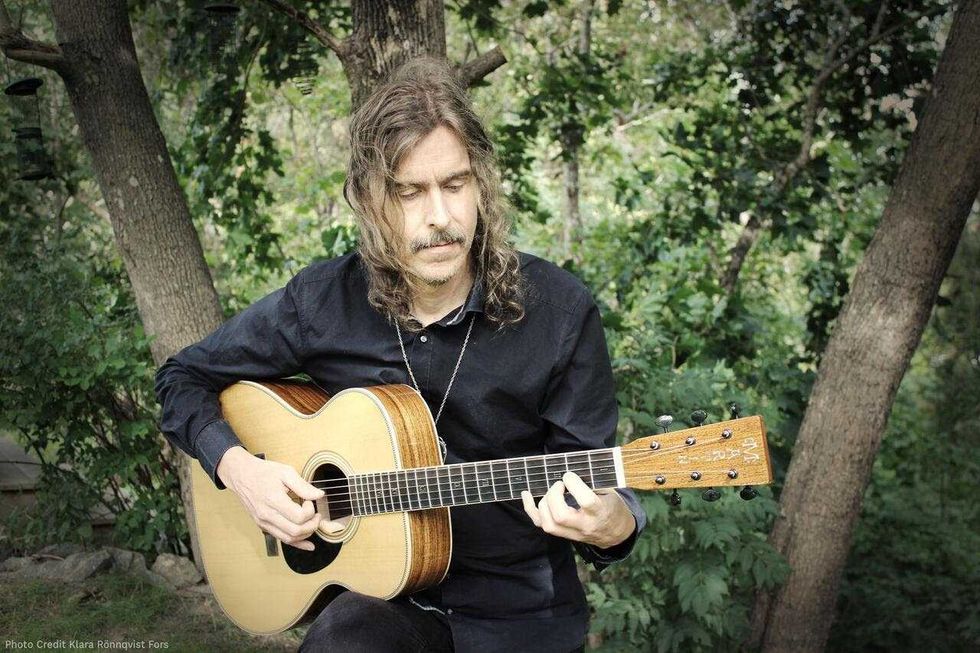
Personal details include an ebony fingerboard with black mother-of-pearl Roman numerals and black Liquidmetal® bridge pins for added sustain and clarity. Inside, VTS-treated spruce and Golden Era scalloped X-bracing—as featured on the Modern Deluxe Series—deliver vintage warmth and dynamic response.
“Is this the best guitar I’ve ever played? Including the ones in your museum? I believe so,” Mikael said. “It just sings—the resonance, the clarity, the low end. Everything about it feels magnificent.”
Each guitar includes a laser-etched stainless-steel label and custom Harptone case.
ABOUT MIKAEL ÅKERFELDT
Mikael Åkerfeldt is the frontman, guitarist, and primary songwriter of the pioneering progressive metal band Opeth. Since joining in the 1990s, he has led the group from its death metal roots into genre-defying territory, blending guttural growls with clean baritone vocals and weaving progressive rock, folk, and classical influences into its sound. Under his leadership, Opeth has earned two Swedish Grammis awards and established itself as one of Scandinavia’s most influential metal bands.
Mikael's artistry extends well beyond Opeth. He co-founded Storm Corrosion with Steven Wilson, contributed vocals to Bloodbath, and composed the score for the Netflix series Clark. Ranked among the greatest modern metal guitarists, he is also a devoted vinyl collector and music historian with a deep reverence for tradition and craft. His connection to Martin guitars goes back to the early ’90s, when he sold them at a small shop in Stockholm. Decades later, that relationship comes full circle with his own signature Martin—a collaboration that unites elegance, darkness, and uncompromising creativity.



